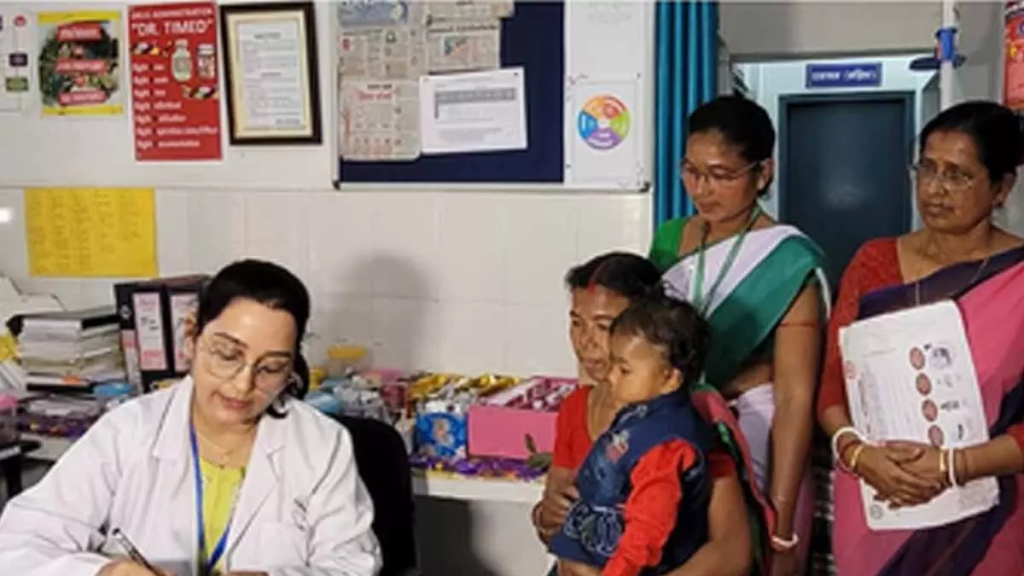- Courses
- GS Full Course 1 Year
- GS Full Course 2 Year
- GS Full Course 3 Year
- GS Full Course Till Selection
- Answer Alpha: Mains 2025 Mentorship
- MEP (Mains Enrichment Programme) Data, Facts
- Essay Target – 150+ Marks
- Online Program
- GS Recorded Course
- Polity
- Geography
- Economy
- Ancient, Medieval and Art & Culture AMAC
- Modern India, Post Independence & World History
- Environment
- Governance
- Science & Technology
- International Relations and Internal Security
- Disaster Management
- Ethics
- NCERT Current Affairs
- Indian Society and Social Issue
- NCERT- Science and Technology
- NCERT - Geography
- NCERT - Ancient History
- NCERT- World History
- NCERT Modern History
- CSAT
- 5 LAYERED ARJUNA Mentorship
- Public Administration Optional
- ABOUT US
- OUR TOPPERS
- TEST SERIES
- FREE STUDY MATERIAL
- VIDEOS
- CONTACT US
Sample Registration System (SRS) Report 2021 : India’s Progress in Maternal and Child Health
Sample Registration System (SRS) Report 2021 : India’s Progress in Maternal and Child Health

- India has shown a consistent and encouraging decline in maternal and child mortality.
- It is a significant progress toward achieving the Sustainable Development Goals (SDG) 2030 targets.
- The Sample Registration System (SRS) Report 2021, released by the Registrar General of India (RGI) on 7th May 2025, highlights this trend across multiple health indicators.
- SRS is a large scale demographic survey conducted every year by the Office of the Registrar General of India in all States & Union Territories.
Key Statistical Achievements (2014–2021) : As per the Sample Registration System (SRS) 2021 :
|
Indicator |
2014 / 2014–16 |
2021 / 2019–21 |
Unit |
|
Maternal Mortality Ratio (MMR) |
130 (2014–16) |
93 (2019–21) |
Per 1,00,000 live births |
|
Infant Mortality Rate (IMR) |
39 (2014) |
27 (2021) |
Per 1,000 live births |
|
Neonatal Mortality Rate (NMR) |
26 (2014) |
19 (2021) |
Per 1,000 live births |
|
Under-Five Mortality Rate (U5MR) |
45 (2014) |
31 (2021) |
Per 1,000 live births |
|
Total Fertility Rate (TFR) |
2.3 (2014) |
2.0 (2021) |
Children per woman, Reached replacement level |
|
Sex Ratio at Birth |
899 (2014) |
913 (2021) |
Girls per 1,000 boys |
Definition
- Total Fertility Rate (TFR): This refers to the average number of children a woman can have during her reproductive life cycle.
- Neonatal Mortality Rate(NMR): Neonatal mortality rate refers to the number of deaths during the first 28 completed days of life per 1000 live births in a given year.
- Infant Mortality Rate (IMR): Infant Mortality Rate refers to the deaths of children below the age of one year, per 1000 live births in a given year
- Under 5 Mortality Rate: It is defined as the probability of a child dying between birth and exactly 5 years of age, and it is expressed in per 1,000 lives.
States Achieving SDG Health Targets
|
SDG Health Indicator |
SDG Target by 2030 |
States/UTs Achieved Target |
Total |
|
Maternal Mortality Ratio (MMR) |
≤ 70 per 1,00,000 live births |
Kerala, Maharashtra, Telangana, Andhra Pradesh, Tamil Nadu, Jharkhand, Gujarat, Karnataka |
8 |
|
Under-Five Mortality Rate (U5MR) |
≤ 25 per 1,000 live births |
Kerala, Delhi, Tamil Nadu, Jammu & Kashmir, Maharashtra, West Bengal, Karnataka, Punjab, Telangana, Himachal Pradesh, Andhra Pradesh, Gujarat |
12 |
|
Neonatal Mortality Rate (NMR) |
≤ 12 per 1,000 live births |
Kerala, Delhi, Tamil Nadu, Maharashtra, Jammu & Kashmir, Himachal Pradesh |
6 |
India’s Progress in Global Context
- India’s pace of improvement has outperformed global averages:
- Maternal Mortality
- According to the UN MMEIG Report 2023, India’s MMR fell by 23 points between 2020 and 2023.
- Since 1990, India has achieved an 86% reduction, compared to the global average of 48%.
- Child Mortality
- As per the UN IGME Report 2024:
- U5MR reduced by 78% (vs. 61% globally)
- NMR declined by 70% (vs. 54% globally)
- IMR dropped by 71% (vs. 58% globally)
- As per the UN IGME Report 2024:
- This places India among the top-performing countries in child survival improvements globally.
Government Interventions: The Driving Force
India’s progress is rooted in targeted policy interventions, comprehensive schemes, and public health system reforms.
a. Financial Protection and Universal Access
- Ayushman Bharat – PM-JAY provides health coverage of ₹5 lakh per family annually, enabling free, cashless healthcare for millions.
- Seamless access to primary, secondary, and tertiary healthcare services through Health and Wellness Centres (HWCs) and empanelled hospitals.
b. Maternal and Newborn Health Services
- Free institutional deliveries (including caesarean sections) in public health facilities.
- Provision of free diagnostics, transport, essential medicines, and nutritional support for pregnant women.
- Support for 300 lakh pregnancies and 260 lakh live births annually.
c. Strengthening Health Infrastructure
- Establishment of:
- Maternity Waiting Homes
- Maternal and Child Health Wings
- Obstetric HDUs/ICUs
- Newborn Stabilization Units (NBSUs)
- Sick Newborn Care Units (SNCUs)
- Mother-Newborn Care Units
d. Improved Clinical Practices
- Use of antenatal corticosteroids for preterm labor.
- Application of Continuous Positive Airway Pressure (CPAP) in newborns.
- Structured follow-up for early screening of hearing and vision defects.
e. Human Resource and Capacity Building
- Focused training for midwives, community health workers, and skilled birth attendants.
- Implementation of facility-based quality certification and supervisory mechanisms.
f. Technology and Data-Driven Governance
- Deployment of real-time surveillance systems for maternal and child health.
- Use of digital platforms for tracking outcomes, enabling evidence-based policymaking.
- Integration of health data to improve targeted service delivery and resource allocation.
Conclusion
India's consistent decline in maternal and child mortality rates, coupled with advances in health infrastructure, service delivery, and digital health systems, underscores the government’s strong commitment to public health. These achievements not only move India closer to meeting SDG 3 targets by 2030, but also set a global benchmark in inclusive, affordable, and quality healthcare delivery. Sustained efforts in this direction will be critical to ensure that no woman or child is left behind.




